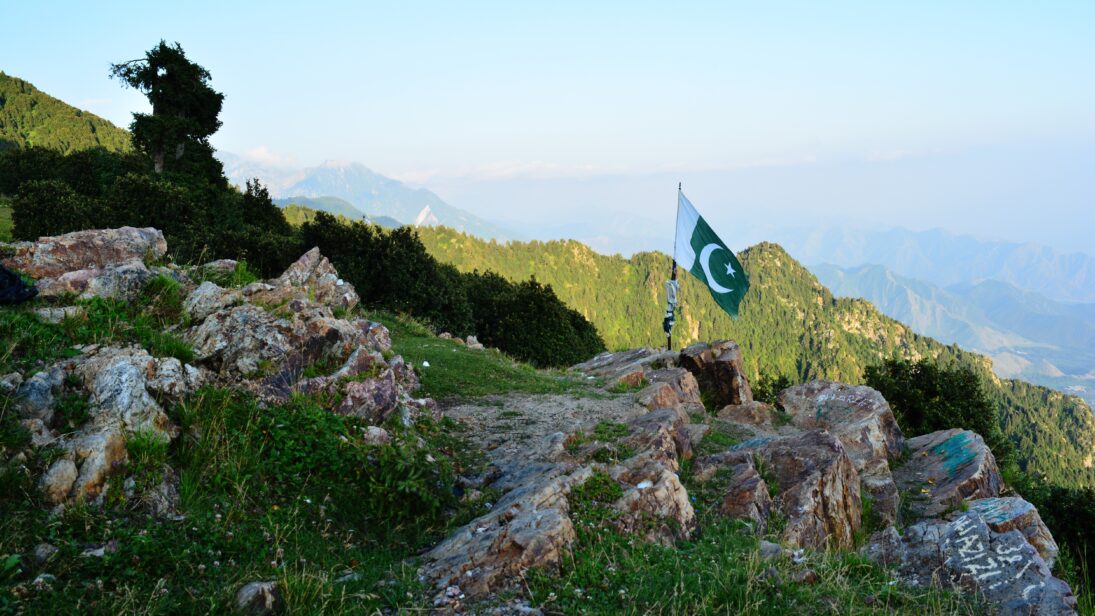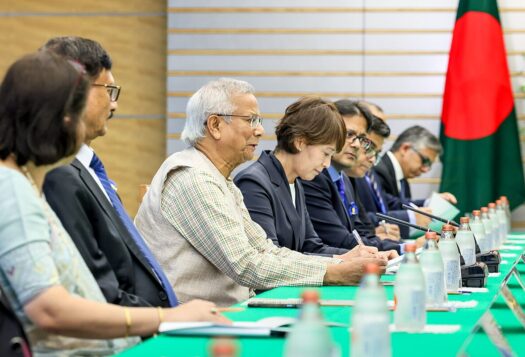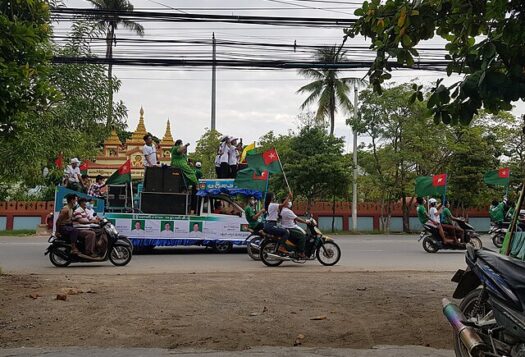
On November 21, 2024, gunmen in Pakistan killed at least 38 Shiite travelers going from the city of Parachinar to Peshawar. The attack occurred in the Ochat area of the Lower Kurram region in the Khyber Pakhtunkhwa (KP) province — a highly volatile area with a history of sectarian clashes. In the aftermath of the killings, attacks broke out in different parts of Kurram region, and mobs of Shiite and Sunni tribes targeted each other’s villages and burnt markets and residential areas. Within a few days, more than 130 people lost their lives and hundreds were injured. This violence forced families to flee to different parts of KP in search of safety.
Weeks later, the situation remains tense. Recently, the two sides organized a sit-in at Parachinar — the headquarters of Kurram district — to register their protest against the violence plaguing their communities. The sit-in continued even after a peace deal was signed, with demands for reopening roads and ensuring safety in public travel. The Human Rights Commission of Pakistan (HRCP) has labeled the current situation in the region a “humanitarian crisis.”
Conflict dynamics in Kurram involve the interplay of tribal land disputes, sectarian clashes, and the presence of terrorist groups. The fault lines in the Kurram region gave the Tehreek-e-Taliban Pakistan (TTP) — also notorious for its anti-Shia stance — grounds to strengthen its presence by exploiting sectarian and land disputes between Sunni Pashtun tribes and their Shia counterparts. TTP’s activities in the region have intensified the sectarian rift, bringing other Sunni militant organizations, such as the Islamic State, and anti-Sunni militant groups, such as the Zainebiyoun Brigade, to the Kurram region.
Conflict dynamics in Kurram involve the interplay of tribal land disputes, sectarian clashes, and the presence of terrorist groups. The fault lines in the Kurram region gave the Tehreek-e-Taliban Pakistan (TTP) — also notorious for its anti-Shia stance — grounds to strengthen its presence by exploiting sectarian and land disputes between Sunni Pashtun tribes and their Shia counterparts.
As terrorism wreaks havoc across the country, tribal rivalries and land disputes between various tribes in the Kurram Agency have largely been overlooked by Pakistani authorities. The current Khyber Pakhtunkhwa Tribal Districts (KPTD) experiences a pervasive administrative vacuum due to a draconian law called the Frontier Crimes Regulation (FCR). These factors, along with a sole focus on managing the crisis instead of resolving it, have prevented peace in the region. The situation demands tailored policy reforms to address the region’s fault lines and conflicts.
Conflict Dynamics: Terrorism, Sectarian and Tribal
A long history of sectarian, tribal, and geopolitical divisions is responsible for the recurring patterns of violence in the ongoing conflict in Kurram. The Kurram Agency comprises three administrative divisions: Upper Kurram, Central Kurram, and Lower Kurram. Prominent Shiite tribes, including the Turi — the largest Shia Pashtun tribe — and parts of the Bangash tribe, inhabit Upper Kurram, with Parachinar serving as their administrative headquarters. Central and Lower Kurram, on the other hand, are predominantly Sunni areas, home to tribes such as the Bangash, Zaimukht, Mangals, Muqbal, and Musazai.
These tribes have land disputes going back to the pre-colonial era, which fueled sectarian frictions in the Kurram region. During the second Anglo-Afghan war in 1879-80, the British colonial policy of divide-and-rule created a further split in an already fragmented tribal society. In the Kurram areas, colonial authorities often favored specific tribes or clans, such as Turis, to maintain their dominance in the region. As far back as before Pakistan’s independence, British colonial authorities had exploited these demographic divisions through a network of measures, including selective land allocation and clan patronage. This has led to enduring tribal rivalries over ancestral lands and grievances.
The recent wave of sectarian clashes, however, traces back to the 1980s. In the aftermath of the Soviet invasion of Afghanistan, then-military dictator General Zia-ul-Haq, promoted the policy of Sunni Islamization. Under this new policy, Pakistan saw a huge influx of Afghan refugees, predominantly from the Sunni sect. Zia patronized anti-Shia Deobandi clerics in Kurram to weaken the Turi tribe’s influence in the region. Meanwhile, the establishment of mujahideen camps in Kurram and then the Federally Administered Tribal Areas (FATA) region attracted funding from Saudi Arabia and Iran who sought to expand their influence in the region. These factors fueled sectarianism in the region and deepened the grievances of different tribes in Kurram.
To understand all these factors, it is crucial to reference the sectarian clashes in Kurram in 2007. The region experienced unprecedented violence in April of that year, which resulted in the loss of over 200 lives. The clashes resulted when members of Shia background carried out a rally against Sunni individuals for chanting anti-Shia slogans, where protestors carried out reactionary anti-Sunni slogans. The ensuing clashes resulted in a weeklong violence pushing the military to enter the fray in order to bring a temporary end to hostilities.

Kurram Region as Part of KPTD: An Administrative Blackhole
The government’s neglect of FATA and its treatment of the conflict as a sole counter terrorism issue led to a half-hearted approach to resolution. As part of the former FATA, Kurram was previously governed by a colonial-era law — the FCR. The law concentrated power in the hands of tribal leaders and political agents who resisted systemic changes and modernization to maintain their authority. The federal government’s interaction with the region was limited to engagement with these political agents. The office of political agents was introduced in 1897 in Malakand Agency, which later extended to all seven agencies of then North West Frontier Province (NWFP). Political agents were the chief administrators in each agency, under the direct control of the federal government, responsible for governance, law enforcement, and maintaining order in the region. Additionally, as part of the larger FATA region, Kurram was not integrated into Pakistan’s electoral system and lacked popular representation in the national and provincial parliaments. Consequently, the population was denied necessities such as education, healthcare, and adequate infrastructure.
In May 2018, the 25th Constitutional Amendment integrated the FATA region into the KP province as the KPTD. The amendment grants Kurram residents in the KPTD the same political, constitutional, and economic rights as other KP residents. It also obligates the federal government to allocate $357 million (100 billion Pakistani rupees) per annum as part of a 10-year plan for rehabilitating and reconstructing the tribal areas. However, the federal government has failed to allocate the promised resources. The KP government received only approximately $310 million of the $1.79 billion promised between 2018 and 2023. The Peshawar High Court recently issued notices to the federal and KP governments over a petition on the failure to issue a new National Financial Commission (NFC) Award and meet the financial obligations for the merged tribal districts. The political differences between KP and federal governments exacerbate these administrative and financial hurdles.
Ineffective governance in Kurram is a primary factor in the unresolved land disputes between tribes of different sects. In 2008, the government engaged various stakeholders to initiate a dialogue known as the 2008 Murree Accord or Murree Jirga. The Accord addressed key issues, including reopening the Parachinar-Peshawar road, the return of Internally Displaced Persons (IDPs) to Kurram, the restoration of territories seized during the 2007 sectarian clashes, the release of prisoners, and the provision of relief funds for IDPs. The Accord also stipulated a fine of approximately $72,000 for any group that violated its terms. While the 2008 Murree Accord successfully facilitated the return of prisoners from the 2007 clashes, the lack of adequate administrative authority resulted in the continued occupation of lands confiscated during the 2007 clashes.
The Kurram agency has also seen multiple counterterrorism offensives and Intelligence-based Operations (IBOs) since 2010. Despite significant success in counterterrorism operations over the years, there has been a rise in discontent against the military for several reasons, including huge collateral damage, large-scale displacement, human rights violations, and a lack of development in the region. All these factors exacerbated discontent, disrupting the region’s economic and social fabric.
Imperative Policy Reforms
The Kurram district is strategically located on the Pakistan-Afghanistan border, and sectarian violence in the region has serious implications for Pakistan’s internal security and stability. The sectarian differences have also contributed to a lack of trust between the various factions. The constant violence complicates counterterrorism operations and strains the already limited financial resources. The firefighting approach that successive governments have adopted for Parachinar city, and the Kurram region, has failed miserably. Since Parachinar’s issues of tribal and sectarian rifts are multifaceted, a Kurram-specific approach is needed to mend the chronic fissures of the Parachinar crisis.
Since Parachinar’s issues of tribal and sectarian rifts are multifaceted, a Kurram-specific approach is needed to mend the chronic fissures of the Parachinar crisis.
The authorities should create administrative and legal institutions to implement new laws to facilitate the adoption of the 25th Amendment. Specifically, to address administrative gaps, the government can carry out a phase-wise rollout of resource allocation and institution building starting from violence-prone regions. Simultaneously, the KP government needs to codify the clauses related to the return of confiscated lands and financial penalties in case of violation under the 2008 Murree Accord. Unless the tribes from different sects stop engaging in wars to take their ancestral lands back, any effort to settle terrorism or sectarianism in Parachinar will be in vain.
Lastly, Paigham-e-Pakistan was a potent counter-narrative policy on extremism and terrorism. The government should use the message, endorsed by around 7,000 religious scholars from both sects, to build strategies and policies to counter sectarianism. The KP government needs to build consensus among warring parties and settle its political differences with the federal government. The rift hinders the effective management of new districts and obstructs the smooth flow of financial resources to KPTD for building administrative and legal institutions. Unless both governments muster a strong will to adopt a holistic approach towards this issue, they will be resigned to perennial firefighting.
Also Read: Pakistan in 2024: Economic Strife, Political Resentment, & Security Pressures Spell Gloom
Views expressed are the author’s own and do not necessarily reflect the positions of South Asian Voices, the Stimson Center, or our supporters.
***
Image 1: Sartaj Hussain via Wikimedia Commons
Image 2: Abbas.Haider355 via Wikimedia Commons


